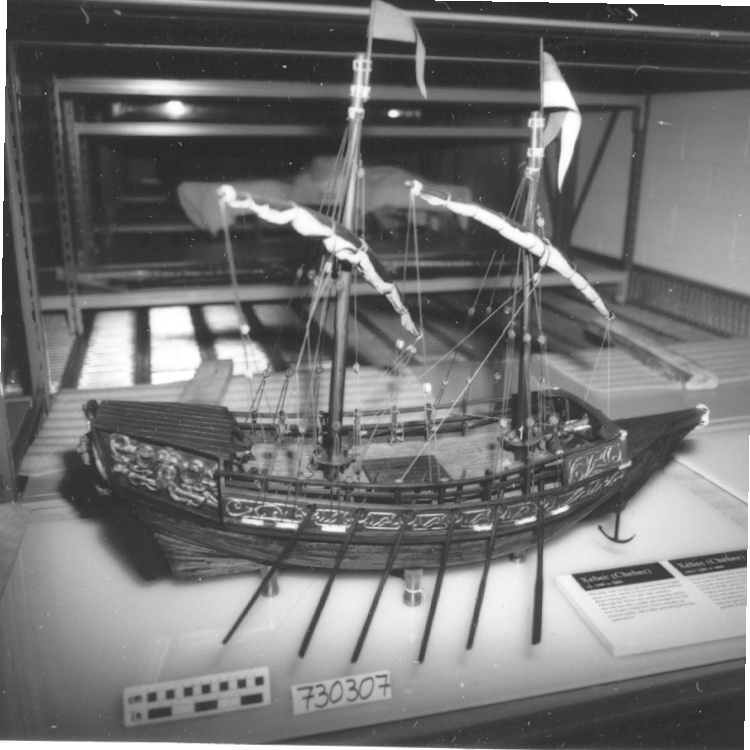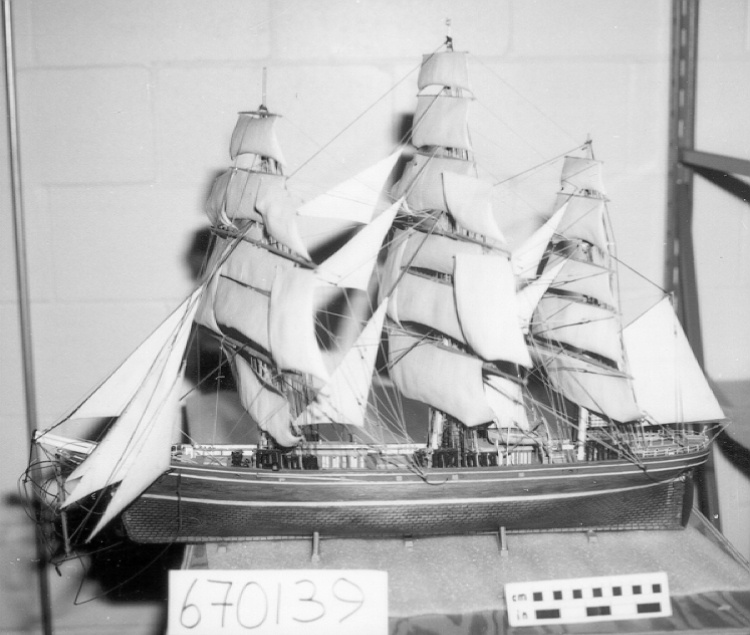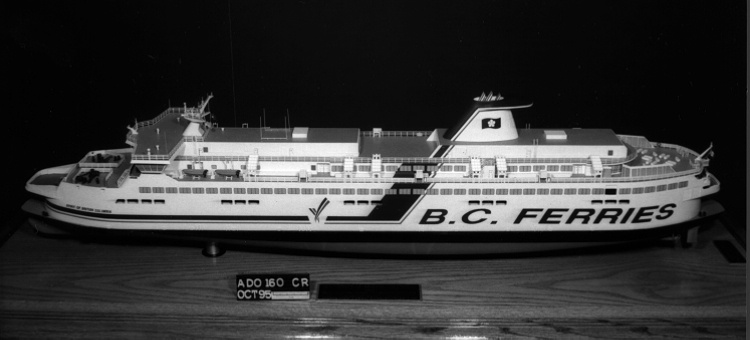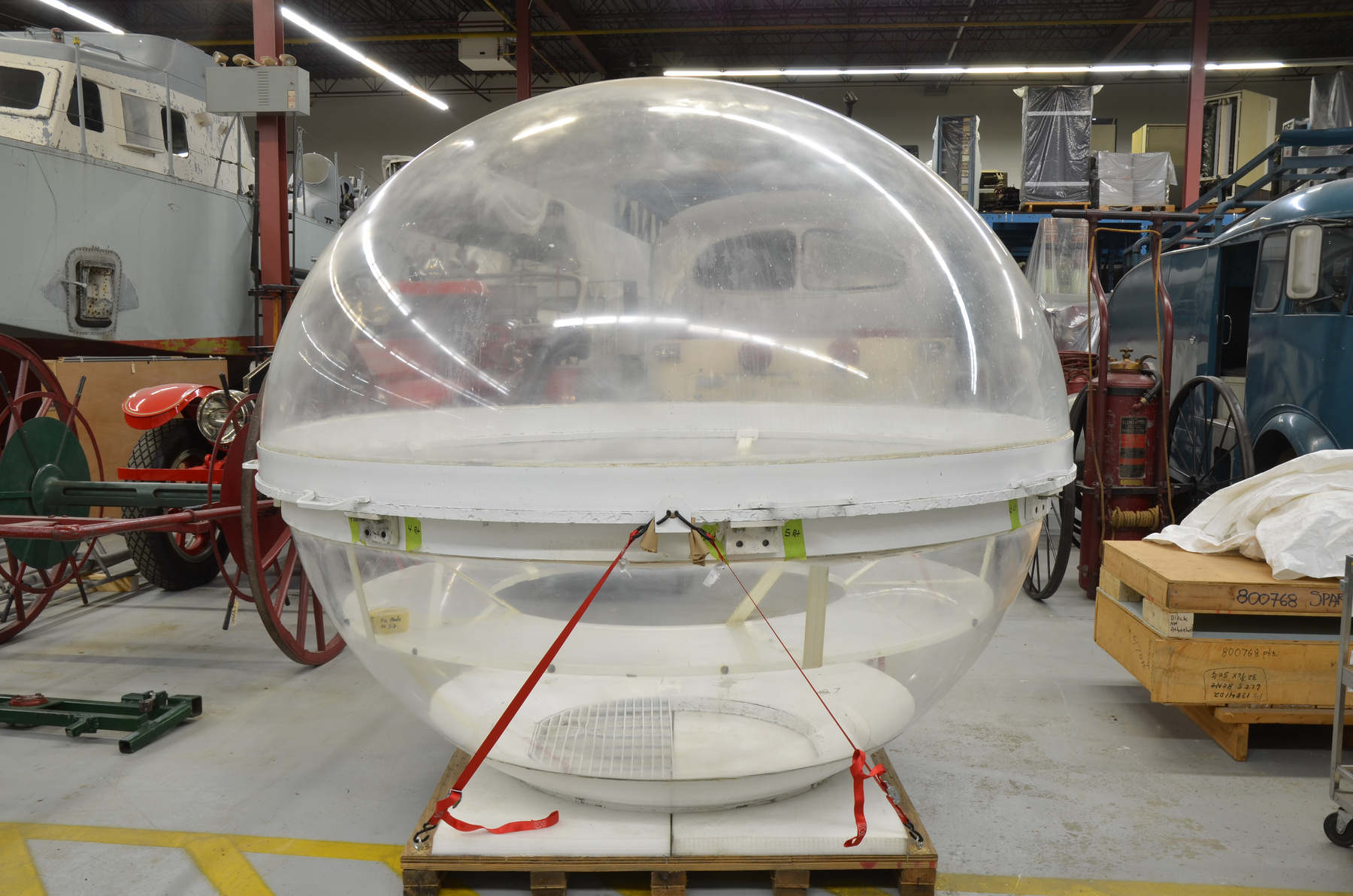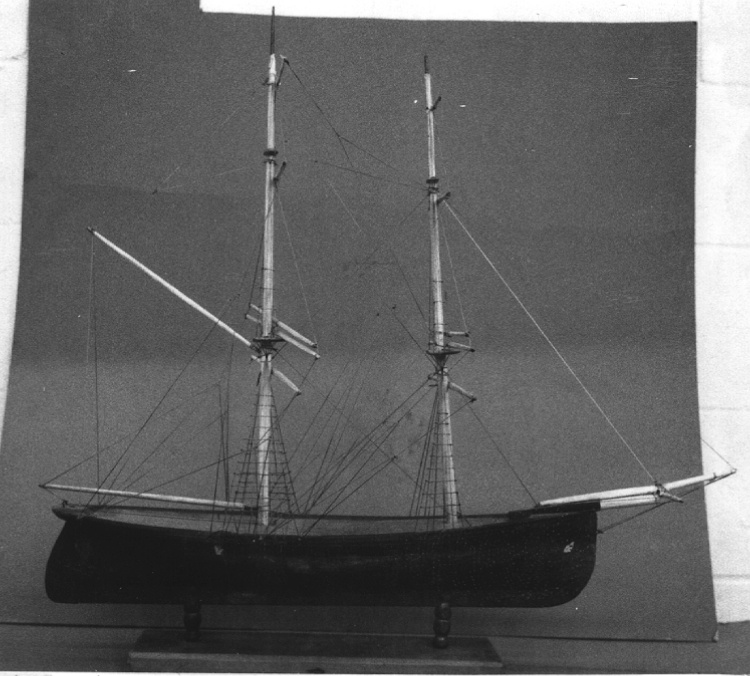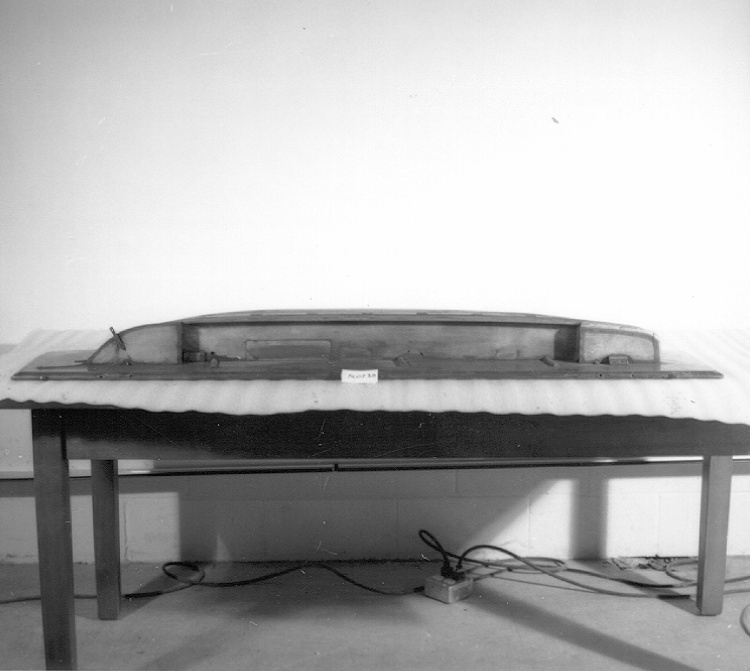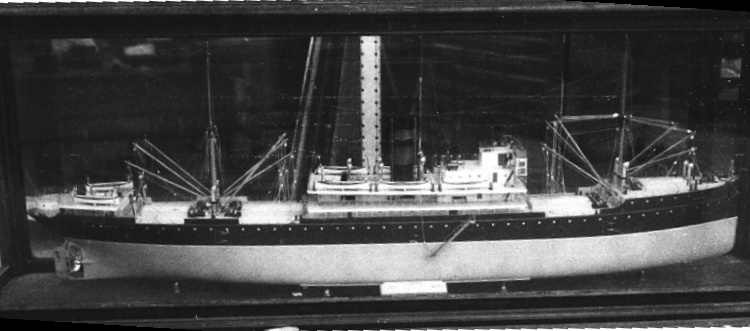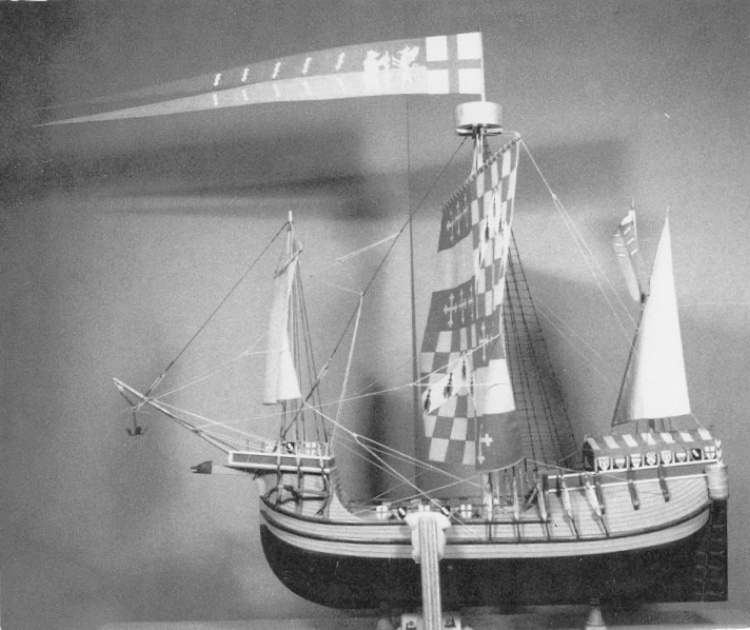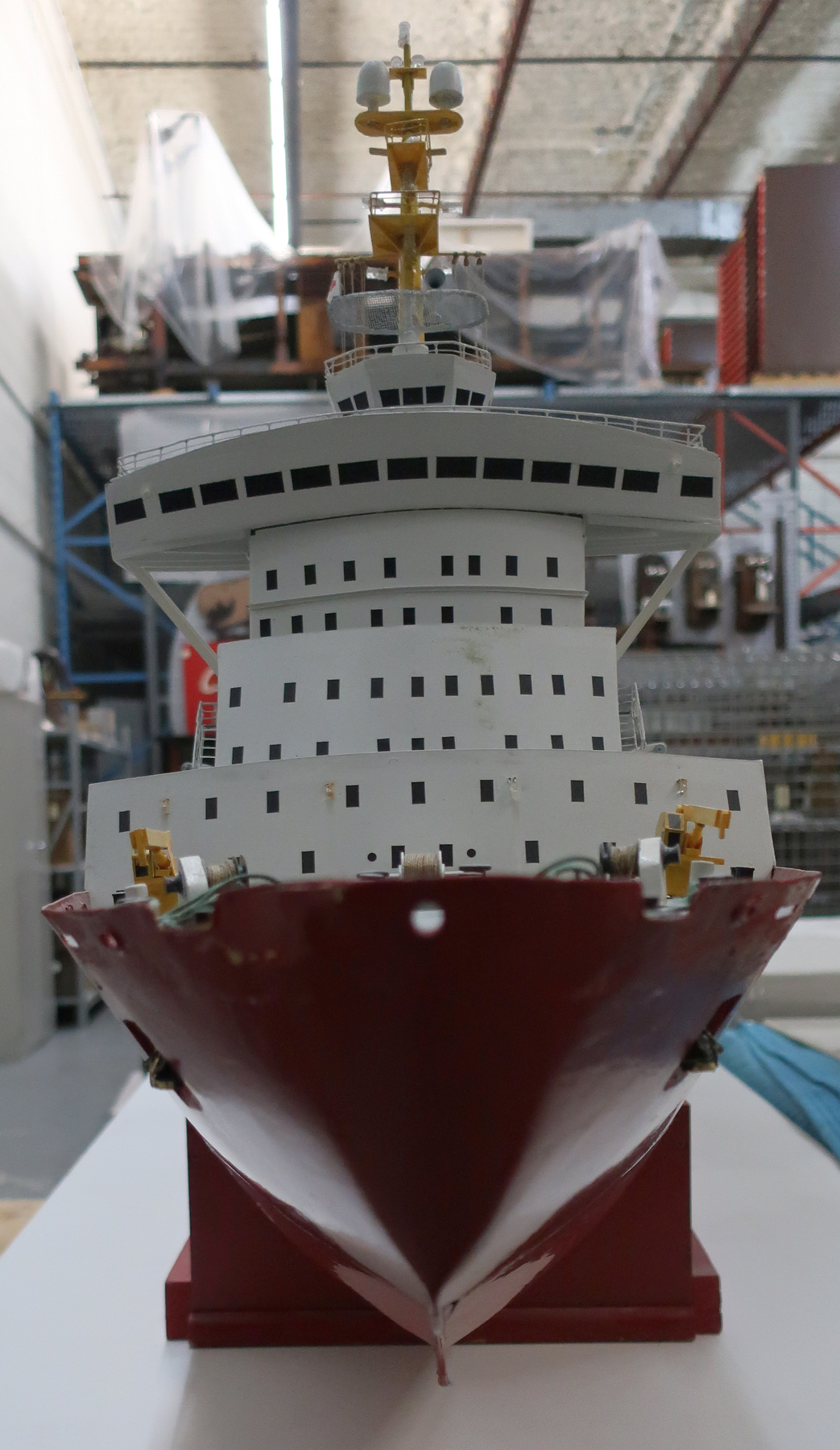Modèle de navire
Utiliser cette image
Puis-je réutiliser cette image sans autorisation? Oui
Les images sur le portail de la collection d’Ingenium ont la licence Creative Commons suivante :
Copyright Ingenium / CC BY-NC-ND (Attribution-NonCommercial 4.0 International (CC BY-NC 4.0)
ATTRIBUER CETTE IMAGE
Ingenium,
2018.0167.001
Permalien:
Ingenium diffuse cette image sous le cadre de licence Creative Commons et encourage son téléchargement et sa réutilisation à des fins non commerciales. Veuillez mentionner Ingenium et citer le numéro de l’artefact.
TÉLÉCHARGER L’IMAGEACHETER CETTE IMAGE
Cette image peut être utilisée gratuitement pour des fins non commerciales.
Pour un usage commercial, veuillez consulter nos frais de reproduction et communiquer avec nous pour acheter l’image.
- TYPE D’OBJET
- Polar 8 Icebreaker/ 1:100 scale
- DATE
- 2006–2009
- NUMÉRO DE L’ARTEFACT
- 2018.0167.001
- FABRICANT
- Inconnu
- MODÈLE
- Nanuk
- EMPLACEMENT
- Inconnu
Plus d’information
Renseignements généraux
- Nº de série
- S/O
- Nº de partie
- 1
- Nombre total de parties
- 1
- Ou
- S/O
- Brevets
- S/O
- Description générale
- The ship hull is made with traditional plank-on-frame construction and 3mm polystyrene, reinforced with wood, for the substructure. The propellers are made from metal. Some details are made with twine, string, or fabric.
Dimensions
Remarque : Cette information reflète la taille générale pour l’entreposage et ne représente pas nécessairement les véritables dimensions de l’objet.
- Longueur
- 167,0 cm
- Largeur
- 35,5 cm
- Hauteur
- 77,0 cm
- Épaisseur
- S/O
- Poids
- 32,0
- Diamètre
- S/O
- Volume
- S/O
Lexique
- Groupe
- Transports maritimes
- Catégorie
- Maquettes
- Sous-catégorie
- S/O
Fabricant
- Ou
- Inconnu
- Pays
- Inconnu
- État/province
- Inconnu
- Ville
- Inconnu
Contexte
- Pays
- Canada
- État/province
- Québec
- Période
- 2009 - 2018
- Canada
-
Taken from acquisition proposal "Model: The skilled modellers of the then West Island Ship Modellers Club built this model based on a set of detailed plans drawn up by the marine architects German and Milne. Though the ship itself was never built, the planning for it was well-advanced by the time the Mulroney government cancelled the project in 1990. The club chose this ship because of the availability of original marine architect’s plans, its good looks and uniqueness, and its historical interest as the largest and most advanced icebreaker ever to be proposed for the Canadian Coast Guard. This model is an accurate miniature of what the Polar 8 Icebreaker would have looked like had it been built. Ship: The Polar 8 ship represents important themes identified in the historical assessment Shipbuilding and Naval Architecture in Canada and the related collection assessment. The most important of these is the development of the shipbuilding and related marine industries in 20th century Canada as “an important expression of Canadian nationalism and sovereignty. But the project and the model also fit into the categories of “federal marine initiatives and federal institutions” and Canadian shipbuilding after 1945. Though the ship was never built, the Polar 8 project symbolizes Canada’s considerable and ongoing concern with Arctic sovereignty. Since taking control of the Arctic Archipelago in the late 19th century, successive Canadian governments have sought to establish legal jurisdiction over the territory and the waters of the region. They have been especially concerned with Canadian control of the Northwest Passage which they maintain is Canadian territorial water, a claim that has yet to be established in international law." - Fonction
-
Model: To show what the ship would have looked like if it had been constructed. To provide an outlet for model builders and operators. The ship is fully-functional and radio-controlled. Ship: To provide the Canadian Coast Guard with an icebreaker capable of working year-round in most Arctic waters as a means of reinforcing Canada’s claim to sovereignty over those waters. - Technique
-
Taken from acquisition proposal "Model: This model is 100:1 scale. The Marine Modellers Montreal/Modélistes Marin Montréal used traditional plank-on-frame construction for the hull and 3mm polystyrene with wood reinforcement for the superstructure. It includes all the deck equipment and structures that the actual ship would have had from mooring, anchoring, and lifesaving equipment to cranes, helicopters, and other supplementary vehicles. It also has operating signal lights, a rotating radar screen, and LED lights programmed to flash four different messages in Morse code. The members of the club put Nanuk in the water on the north shore of the St. Lawrence River near Montreal. Once launched, the ship’s performance “exceeded” their expectations, accelerating “easily and smoothly” up to top speed. Nanuk also turned quite sharply even at full speed. After full testing, the team made only a few small adjustments to improve performance. Ship: The technological significance of the Polar 8 icebreaker rests in what it represents. On a general level, the vessel represents the culmination of years of Canadian research and development work on ice-capable and ice-breaking vessels. The Polar 8 ship also represents the height of Canadian icebreaker design. As planned, it “would have been by far the largest and most powerful icebreaker in the world.” See 'Acquisition Proposal' by Sharon Babaian in Supp. Info for more context." - Notes sur la région
-
Inconnu
Détails
- Marques
- "NANUK/ OTTAWA" printed in white block letters on the side of the stern of the ship; only "NANUK" is printed in the same white lettering on the side prow. A white impression of the Canadian flag is printed on both sides of the ship towards the stern with "Fisheries and Oceans/ Canada" and "Pêches et Océans/ Canada" written in thin white lettering beside it on both sides of the ship. “Rescue Sauvetage” printed in black ink on both sides of the bridge. A red maple leaf sticker adhered to both sides of the stack. “Canada” logo printed in black on lower sides of the bridge. Seven smaller red boats (lifeboats and motorboats) on the deck each have “Coast Guard” and “Garde côtière” printed in white ink of the side. The yellow rescue helicopter on the landing pad has an electrical wire attaching it to the deck. It has “Canada”, “Canadian/ Forces”, “Forces/ Canadiennes”, “RESCUE/ SAUVETAGE”, and “901” printed in black ink on the body.
- Manque
- Appears complete.
- Fini
- The ship is painted primarily with red and white, and has yellow, black, and grey details. The ship is primarily wood with some synthetiv and metal parts.
- Décoration
- The hull of the ship model is red, while the structure above is mainly white with black and yellow details. There is a red maple leaf on the stack. The deck is painted a light grey. The attached rescue helicopter is yellow. The seven attached small boats are painted in the same red as the hull. The two towers are painted yellow.
FAIRE RÉFÉRENCE À CET OBJET
Si vous souhaitez publier de l’information sur cet objet de collection, veuillez indiquer ce qui suit :
Fabricant inconnu, Modèle de navire, entre 2006–2009, Numéro de l'artefact 2018.0167, Ingenium - Musées des sciences et de l'innovation du Canada, http://collection.ingeniumcanada.org/fr/id/2018.0167.001/
RÉTROACTION
Envoyer une question ou un commentaire sur cet artefact.
Plus comme ceci










